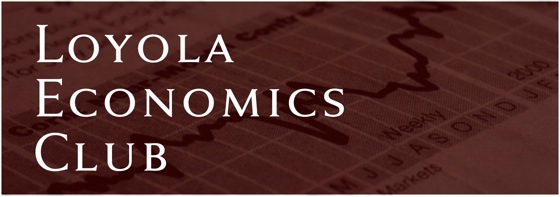Wednesday, October 6, 2010
Bush Tax Cuts Rountable Discussion
Tuesday, September 28, 2010
How Much Infrastructure?

President Obama has recently proposed a new stimulus package as part of his initiatives to boost growth. His proposal consists of $50 billion spending on the country’s infrastructure, with roads, railways and airports being his main focus.
Opponents of this program claim that it will take years before infrastructure spending boosts the economy. They call into question the effectiveness of this effort, and whether it would become a permanent source of growth. (As it has been the case, recent stimulus packages have raised growth and made a small decrease in unemployment; but the programs, being too small and too short-lived did not last long, and changes in growth and unemployment are now fading out with it.)
Supporters, on the other hand, defend that some of the infrastructure projects could be started immediately, and that the effectiveness on this program relies on not only the immediate creation of jobs, but also in the long term modernization of transportation systems.
Acknowledging the two sides of the argument raises different questions and concerns. It is not that spending in infrastructure is a bad proposal; it’s just that it does not address the major problem that is hurting the economy: a collapse in private demand. How exactly does spending in infrastructure solve this issue?
Certainly hiring people to build roads will momentarily diminish unemployment and allow those newly hired to spend in the economy; but once the projects are finished, builders will again be left without jobs. The everlasting tradeoff between short-run and long-run solutions seems to be underestimated here.
While it is true that the depth of the labor market crisis calls for rapid solutions (or as congressional officers understand it, rapid spending on huge stimulus packages), this rapid spending leaves many questions unanswered: How much infrastructure is necessary? Is the overall value added by improving roads where there is high unemployment being maximized? Or would it be better to build roads in areas that might have relatively less unemployment, but greater demand for infrastructure? Are we really solving this and the next generation’s unemployment issues by creating jobs in construction?
It is certainly impossible for either the private or public sectors to spend effectively a large amount in a short period of time, and obtain the expected results. Good spending takes a lot of planning. By focusing on the wrong things we are in serious danger of missing the opportunity to do the right things to help the economy recover from its worst market crisis since the Great Depression.
Monday, March 22, 2010
An Interesting Take on Health Care Reform
https://blogger.googleusercontent.com/img/b/R29vZ2xl/AVvXsEiuvji3MRQoGrPgbTthJswEdGvF6u10pM0hVtXPJ6Dmo-7oTxGOgh2ya3k6yrKTsKCGwMx4BgWuPEpW5BMC8Qxpz1JR2hdTpm1hseYXZdJHuDpios7WPrh5vqQ6Ledb7iNHhIzX12GAIw/s1600-h/Diminishing+Productivity+of+DEBT+(2).jpg
That link leads to a graph how how increasing debt affects GDP. As you will see, there is an inverse trend between the two, that is, an increase in debt generally leads to a decrease in GDP. Currently, the graph's trend shows that for every dollar of debt added to the economy, GDP decreases by around 45 cents.
Sunday, February 28, 2010
Dr. D'Amico on Collective Bargaining and Unions
Collective bargaining may be a right, but that does not necessarily imply that unionization is the right thing in every case. A normative support for unions must first begin with a full accounting of both benefits and costs.In the case at hand, high levels of unemployment might tip Sodexo's decision to decline a union contract today or decline a renewed union contract in the future - thus collective bargaining could jeopardize the long run job security of Loyola dining employees.Lastly, students should recognize that trade offs must be made. Higher costs of production may lead to a lower quality of service.
Saturday, February 27, 2010
NEW: Loyola Economics Club Newsletter
Capital and Labor: The Legos Of Our Economy

The prosperity of a country is tied to the effective usage of its available resources, i.e. capital and labor. The amount of capital and labor in any society is limited, therefore efficient resource allocation is essential for economic growth.
Capital and labor are not homogeneous resources. Certain types of capital work best with a certain types of labor, and vice versa. We cannot force capital or labor to efficiently work in conjunction with any arbitrary resource.
Unfortunately, what the government has done through the stimulus package is to stimulate growth and production by forcing capital and labor to collaborate without taking into consideration their specific purposes and characteristics.
In a Nightly Business Report blog post Steven Horwitz explains this concept:
To see this, I borrow an analogy from the economist Peter Boettke. Stimulus proponents seem to view resources as if they were Play-Doh that could be shaped into any form desired. […] If capital and labor were like Play-Doh, then it wouldn’t matter what government spent on as the idle capital and labor would be equally productive in whatever use was demanded. Unfortunately, capital and labor are more like Legos than Play-Doh. What kids can build with Legos depends on the particular shapes and sizes of the pieces they have and whether and how those pieces can fit together. Any two hunks of Play-Doh can be combined to make a desired object. That is not true for Legos, and it’s not true for capital and labor.
Horwitz concludes that the current pattern of resource allocation should be reevaluated.
Government should not determine the economy’s resource allocation. This task should be left to markets and economic actors. Free markets may appear chaotic, but they do a better job than a centralized bureaucracy of distributing knowledge and allocating resources through competitive prices.
Thursday, February 25, 2010
ESSAY CONTEST
Wednesday, February 24, 2010
Walmart and Whole Foods: same taste at a different price
A recent blind tasting reveals Walmart to be both price competitive and “taste competitive” in the organic and locally grown foods industry.
A chef in Austin prepared two equal meals using two sets of the same ingredients. One set of ingredients came from Walmart, the other set came from Whole Foods. Even though the ingredients were the same, the total price differed greatly: Walmart charged $126.02, Whole Foods $176.04. After the chef cooked the foods the same way and arranged them side by side on a plate, a group of local food experts tried the two versions. The verdict? Same taste!
So, why is there such a difference in price if the ingredients and their tastes are practically the same?
Steven Horwitz argues that
“It is Walmart's very size, so hated by so many progressives and conservatives, that has enabled it to be such a powerful player in the local/slow/organic food markets.”
In other words, Walmart’s average cost per unit is lower due to its size and production level.
Economy of scale seems to be the straightforward explanation. Do you think there is more behind Whole Foods’ higher prices?



